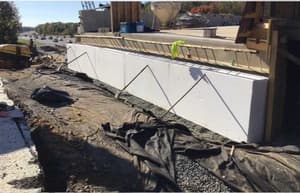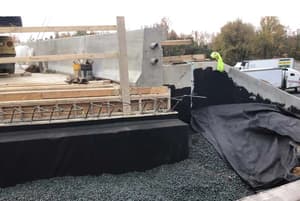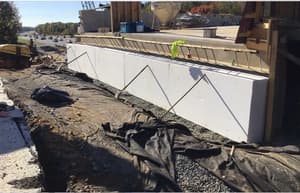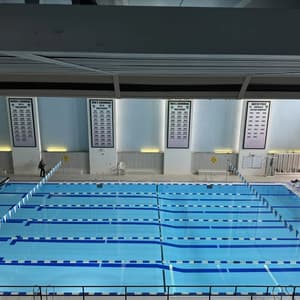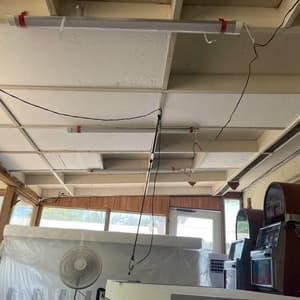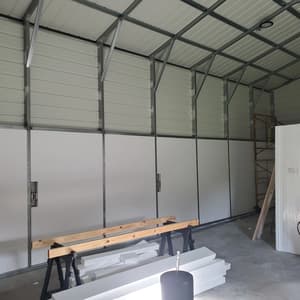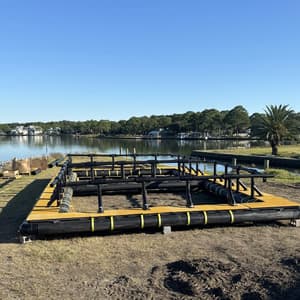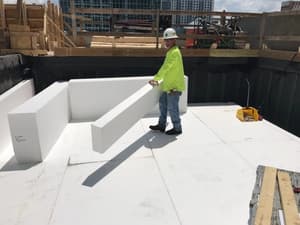EPS elastic inclusion is a polystyrene product designed specifically for bridge and retaining wall construction. Most EPS products used in construction are specified due to their high compression strength to low weight ratio or their insulation properties. EPS elastic inclusion is an EPS product manufactured for a very specific application. It is engineered to contract and expand as pressures are applied and released. This is particularly useful in bridge construction where the pavement and compacted fill meet the concrete bridge abutment. In geographic areas subject to freezing, the underlying soil expands and contracts as the freeze-thaw cycles occur. As this process repeats itself year after year over time settlement occurs at the point where the soil, compacted gravel and pavement meet the concrete abutment of the bridge. This creates a void under the pavement and eventually a dip in the roadway and that bump you feel as you enter and exit a bridge that has been in place for several years. The EPS elastic inclusion, when installed between the concrete abutment and the backfill compresses and expands with the freeze-thaw cycles eliminating the void that causes settlement.
For this I-95 overpass project in Harford County, Maryland, the engineer called for 19” thick panels of EPS elastic inclusion to be placed up against the vertical face of the bridge abutment. After a geomembrane is placed over the EPS to protect it from a potential gas or oil spill, the backfill is installed and compacted prior to the paving installation. This extra step provides years of settlement free construction.
Elastic inclusion, which is also called elasticized polystyrene, has been used in bridge construction in the United States and Canada for 20 years with positive results. The material is available from Universal Foam Products in Hunt Valley, Maryland.
